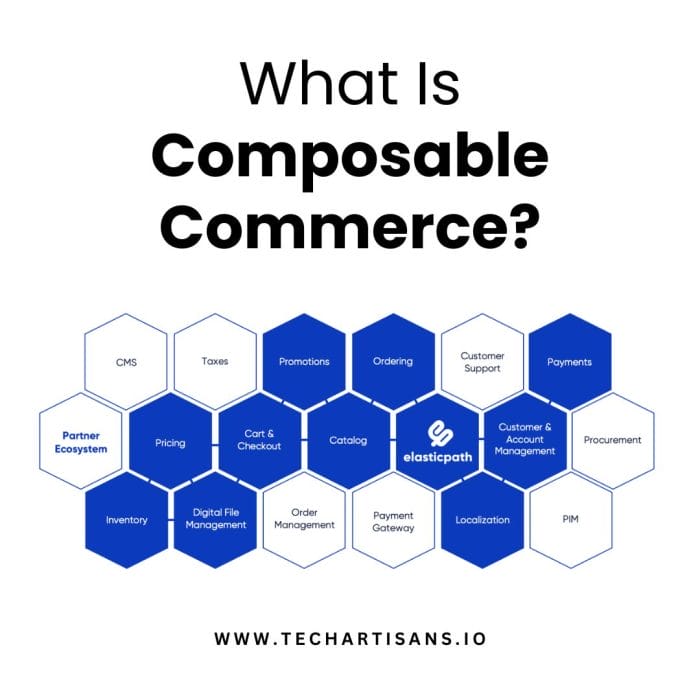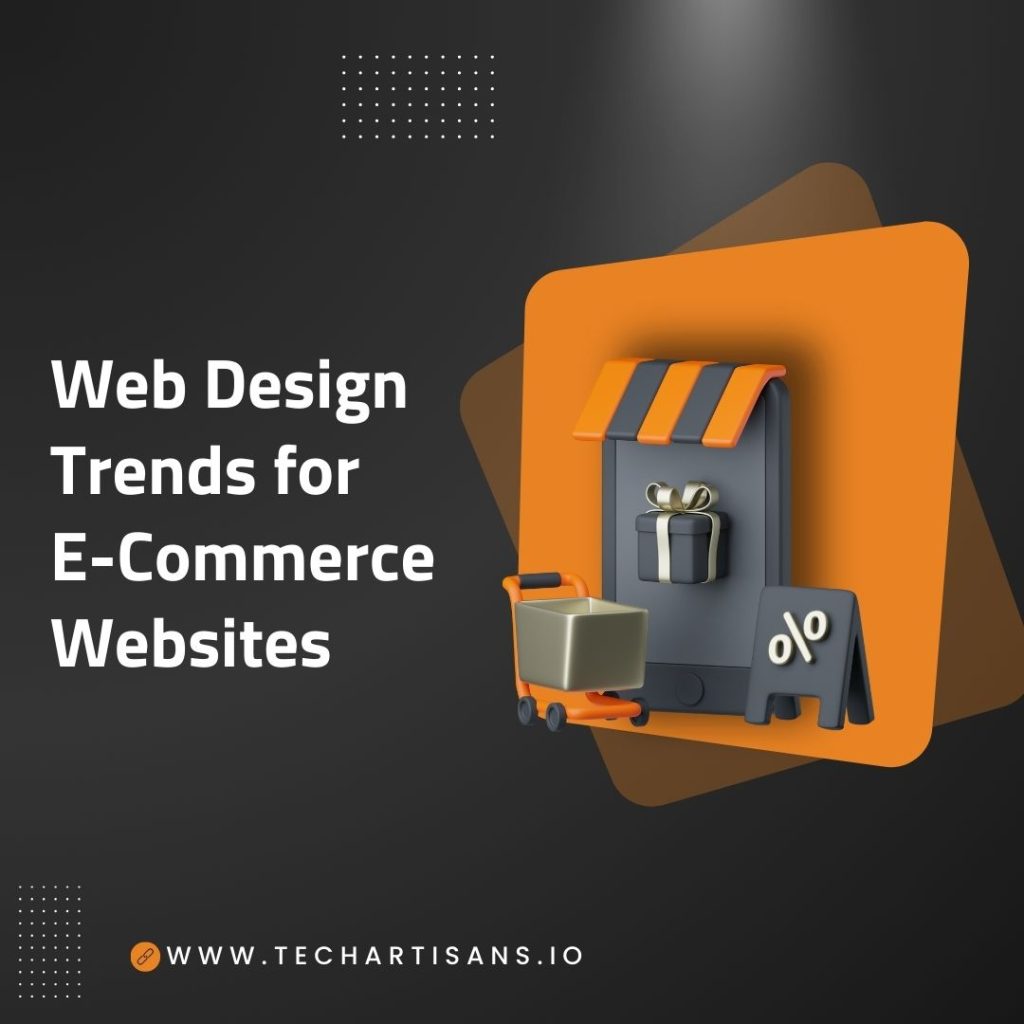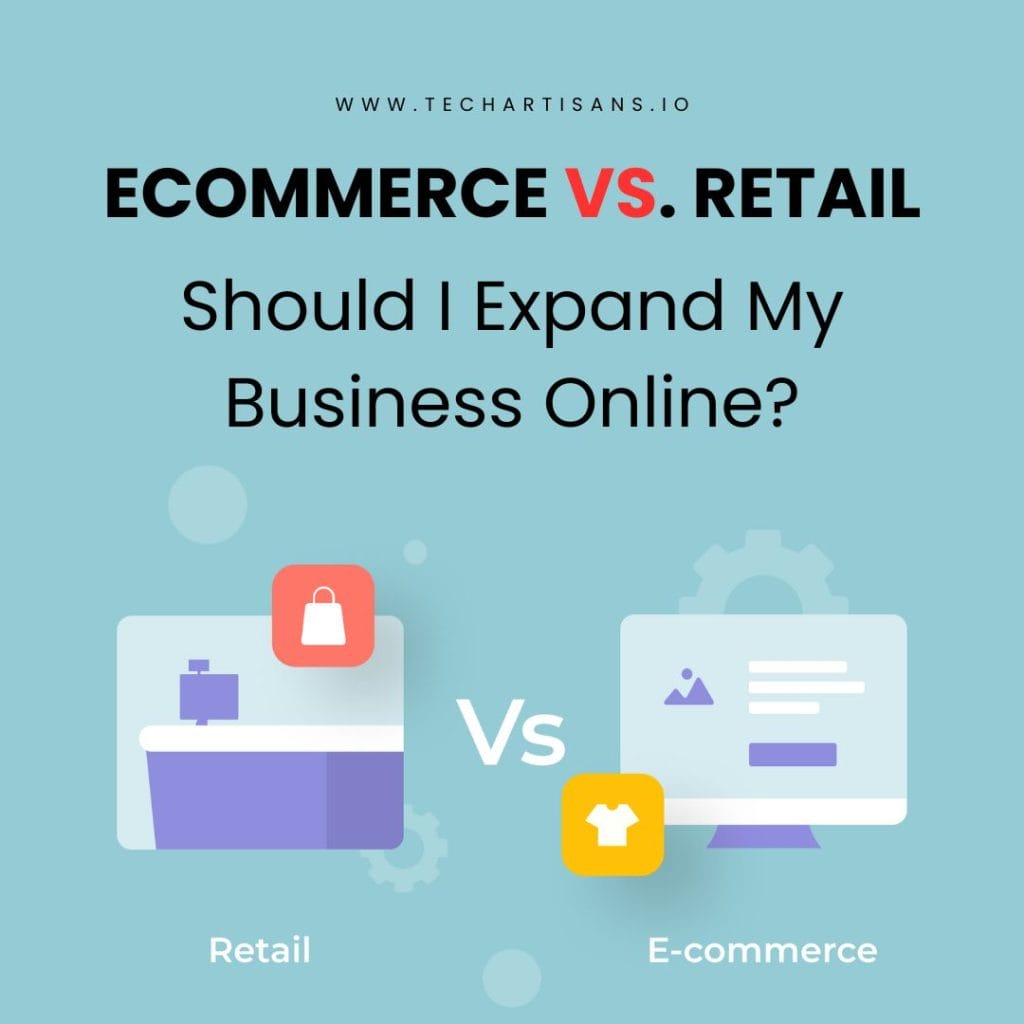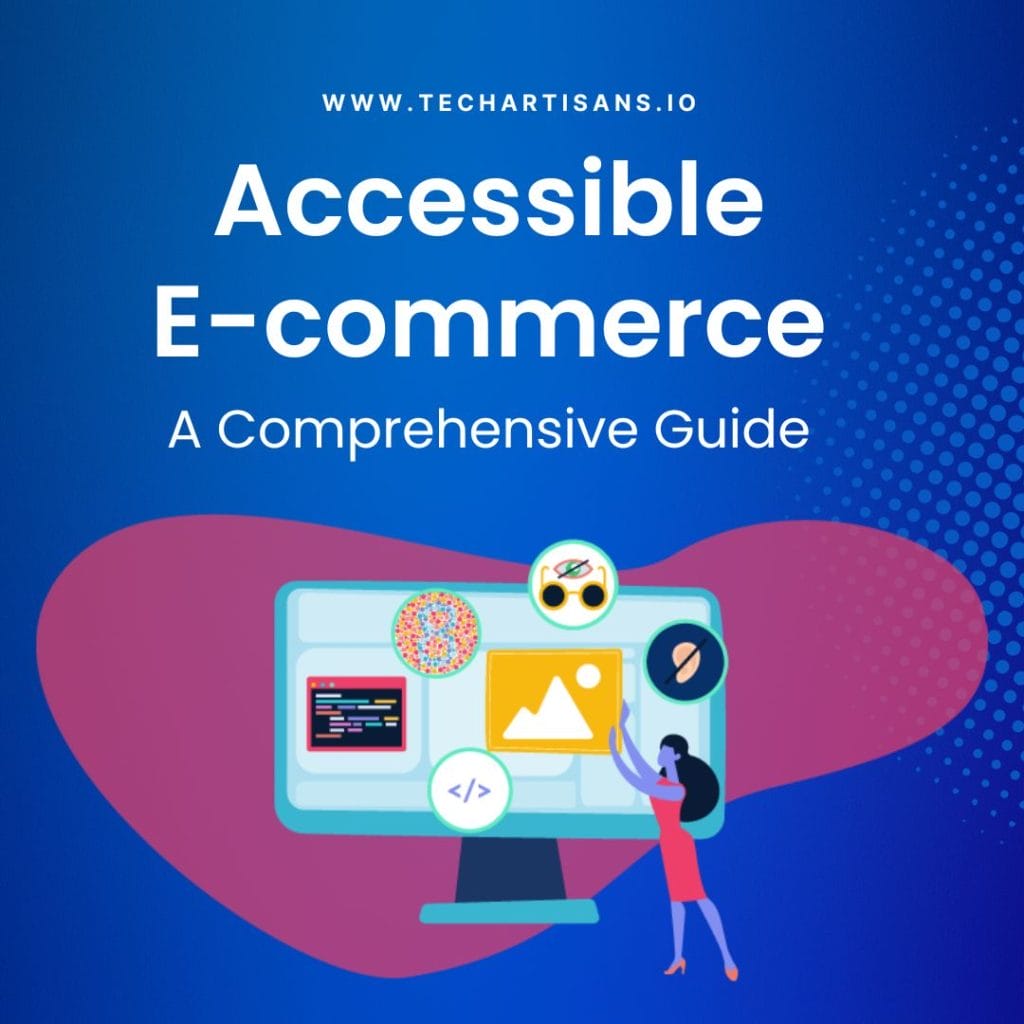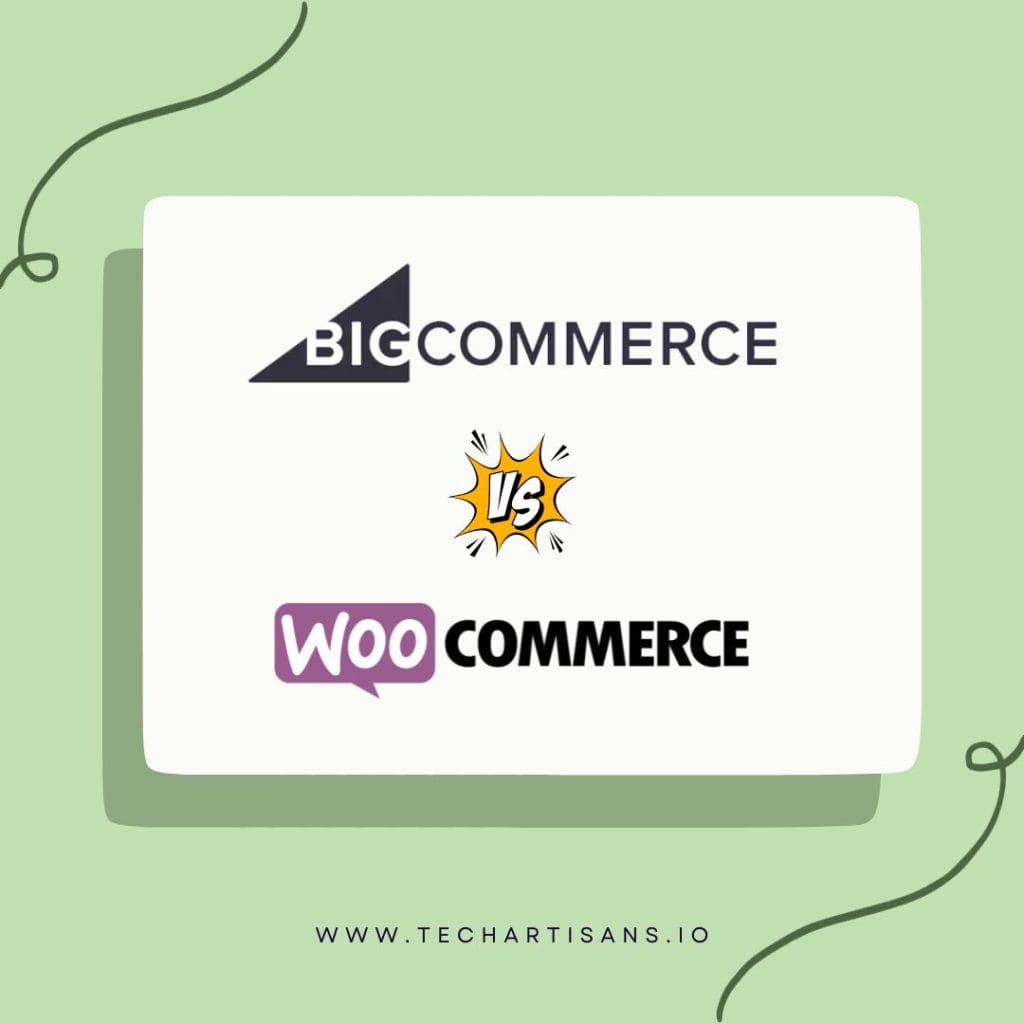“Composable” in software architecture, denotes a modular structure formed by combining building blocks, allowing customized solutions. Composable commerce strategy empowers businesses to select specialized vendors rather than opting for one-size-fits-all solutions. Learn more about ecommerce solutions here.
Gartner highlights composable commerce’s significance, especially in an ecommerce site. Discover its definition, distinctions from other architectures, and its pros and cons below.
What is Composable Commerce?

Composable commerce takes a versatile, modular method for creating and handling digital commerce solutions. This approach employs packaged business capabilities (PBCs) as building blocks, interconnected through APIs. While the core features of an ecommerce store remain, they now function collaboratively with other pre composed solutions, rather than as a central point.
Composable Commerce Vs. Headless Commerce

Headless commerce initially separated front-end presentation and back-end functionality. Composable commerce architecture advances this by enabling businesses to break their ecommerce platform into distinct services.
While headless commerce uses one back end, composable commerce architecture has independent business capabilities, similar to the distinctions discussed in our headless CMS vs. traditional CMS article. Decoupling the front end serves as a solid beginning for businesses adopting composable commerce solutions.
What Are Packaged Business Capabilities?

Packaged business capabilities (PBCs) are distinct software components representing specific ecommerce business requirements. All the components package business capabilities that are functionally complete, ensuring independence. A composable commerce solution combines PBCs using a shared API, potentially from various vendors.
PBCs are designed for specific business requirements. Examples include Storefront, Catalog, Promotions, Cart, Checkout, Payment, and Search, which are essential elements in effective ecommerce strategies. They’re available in a catalog, both first and third-party, for tailored deployment. Composable commerce plug-and-play structure empowers you to select and configure PBCs that best align with your needs.
Composable Commerce Vs. Microservices

Note that PBCs in composable commerce differ from complex microservice architecture. While microservices are individual program units, PBCs comprise these units, collaborating to fulfill distinct business requirements. Composable commerce PBCs can also encompass related microservices for a streamlined, structured, and manageable commerce architecture.
PBCs are similar to microservices, but they don’t have a certain size, so can bring micro or macro capabilities. Also, they aren’t as complex or fragmented to implement, support, and scale.
Evolution of Composable Commerce

Commerce suites, known as monolithic platforms commerce suites, once represented the apex of e-commerce technology. Providers like Oracle, IBM, and SAP offered comprehensive commerce functions in single software systems.
These suites are deeply integrated with digital commerce components like:
- Enterprise resource planning (ERP)
- Customer relationship management (CRM)
- Warehouse management (WMS)
- Product lifecycle management (PLM)
- Content management system (CMS)
However, they formed intricate, non-modular structures due to their all-encompassing approach. Present and future commerce has challenged these legacy suites. Their complexity hinders scalability, resulting in elevated operational costs and limited flexibility.
Benefits of Composable Commerce

Composable commerce provides businesses with numerous advantages for elevating their ecommerce platform systems. It offers enhanced flexibility, increased profits, and improved and customized customer experience, similar to the benefits of a good website. Composable commerce platforms solve business problems and some business benefits of composable commerce are:
1. Flexibility and Agility for Businesses

Composable commerce allows customization of ecommerce platform components, aligning them with your unique business needs. Modular software permits tailored selection and configuration, ensuring alignment with strategies and objectives. While setup might take more time, the payoff is increased business agility, breaking free from purely rigid monolith solutions.
2. Increased Efficiency and Profitability

Businesses that have a composable commerce strategy will outrun the competition by 80% in the pace of new feature implementation. The modular approach offers businesses precise component selection, minimizing wasteful investments in irrelevant or ineffective elements. This streamlined approach conserves time and resources, empowering you to prioritize customer service and revenue generation.
3. Improved User Commerce Experiences

Composable commerce empowers the selection of top-tier components like content management systems and digital marketing automation. This enables precise, personalized touchpoints, including tailored product recommendations and customized content to improve how customers interact.
Limitations of Composable Commerce

Deciding if composable commerce fits your business needs involves considering its complexity compared to traditional commerce all in one platform. Assess these factors to determine their alignment with your objectives:
1. Integration Challenge

Seamless integration of PBCs and services is pivotal for coherent customer experiences. This can be intricate and lengthy, especially without technical expertise. Components may have distinct contracts, APIs, data structures, and dependencies, posing management hurdles. Unless your company is digitally mature with adept engineering and intricate delivery needs, composable commerce business centric models might not be suitable.
2. Ongoing Maintenance

In a composable commerce setup, costs accumulate for maintaining individual solution components, much like the challenges in web design processes especially with numerous PBCs from different vendors.
3. Delayed Market Entry

If speed-to-market is a priority, composable commerce might not be optimal. Since it’s pro-code, consider ecommerce platforms allowing quick setup with pre-built commerce components while retaining the flexibility to compose your architecture.
Composable Commerce and MACH Architecture

MACH Framework has modern technology stacks that include Microservices, API-First, Cloud-Native, and Headless architecture, and exemplifies composable commerce.
- Microservices – PBC composability thrives in microservices, unlike tightly bound monolithic architecture apps, as explained in our comparison of CMS systems.
- API-First – API exposure facilitates composable commerce by connecting multiple applications.
- Cloud-Native – Cloud utilization guarantees scalability, and on-demand access, and avoids upgrades.
- Headless – Decoupled headless solutions continuously enhance customer interfaces, extending to diverse endpoints.
Adopting MACH architecture enables a composable approach. Like MACH, composable architecture empowers the selection and deployment of top-tier modular apps. Adaptability to evolving needs by adding, replacing, or removing specific business capabilities is key. As Amplience aptly phrases it, “It’s the ideal technology stack.”
Why Does B2B Prefer Composable Commerce?

No vendor provides optimal solutions for your intricate new business models and evolving customer demands. Old ecommerce platforms bundled features tightly, hindering integrations with existing systems and superior PBCs or microservices.
Shifting to composable commerce mitigates the risk of purchasing basic out-of-the-box features, aligning with modern digital marketing tools, and offering greater control over application functionality and performance.
Composable Commerce Is:
- Modular Architecture: PBCs deploy independently, reducing risks and enabling module swaps, which is a key component of user experience and SEO.
- Open: Built on open standards, facilitating integrations and customization.
- Flexible: Adaptable to new customers, channels, and markets.
- Business-oriented: Equips both business buyers and developers, ensuring control, business innovation, and cost-effectiveness.
Composable commerce’s flexibility empowers businesses to utilize and create essential features. The resulting applications are lean, swift, and adaptable to deliver innovative experiences. This approach also facilitates seamless integration of various best-of-breed components, enhancing speed delivering superior digital experiences, and meeting customer expectations, from content management to payment processing.
Amid evolving customer demands and essential digital commerce transformation, learn more about ecommerce vs. retail expansion composable commerce empowers ecommerce platforms with enhanced control over e-commerce delivery. Its decoupled composable approach streamlines cross-channel ecommerce store management while ensuring future-proof application success.
What to Look for When Developing Composable Commerce?

As with all technology strategies, several aspects should be considered when crafting a composable commerce approach.
1. MACH Architecture

A future-proof digital strategy relies on modern technologies that offer flexibility, unparalleled scalability, and adaptability. MACH architecture, with its cloud-native, decoupled structure, is essential for a genuine composable commerce approach.
2. Documented APIs

Robust APIs and swift development tools are essential for composable commerce. Optimal development relies on well-documented APIs. Coupling comprehensive documentation with powerful rapid development tools simplifies and accelerates the process.

